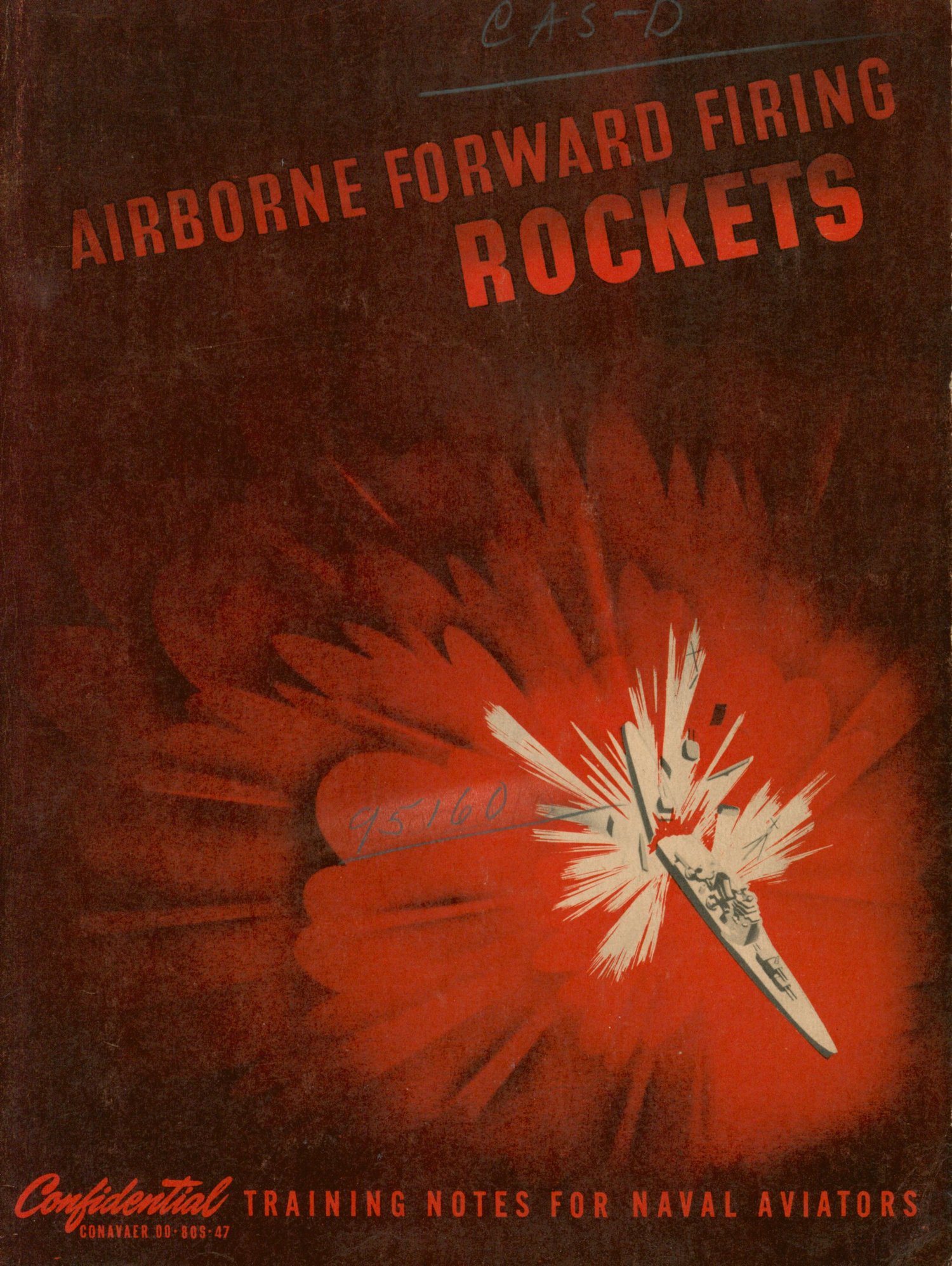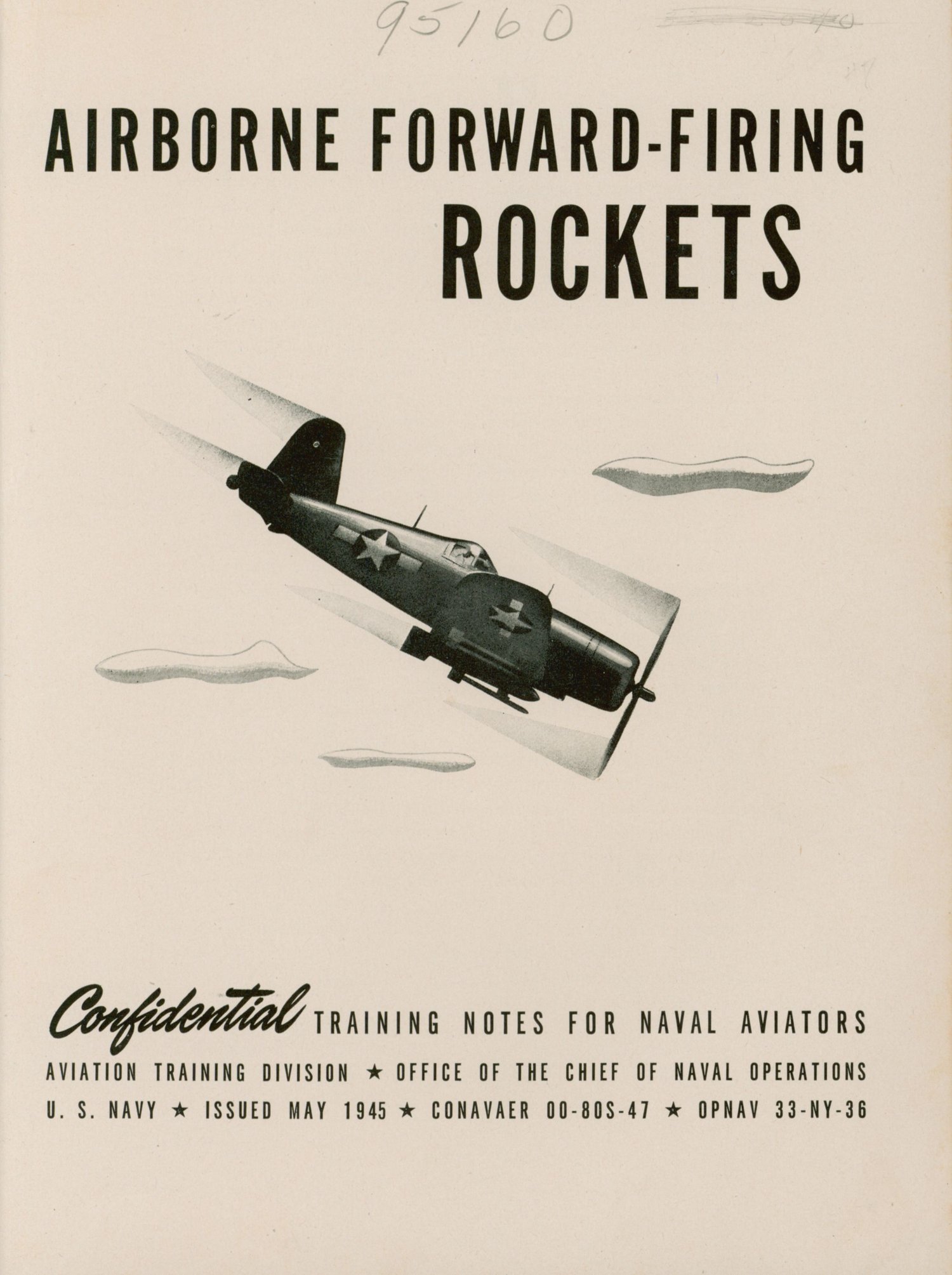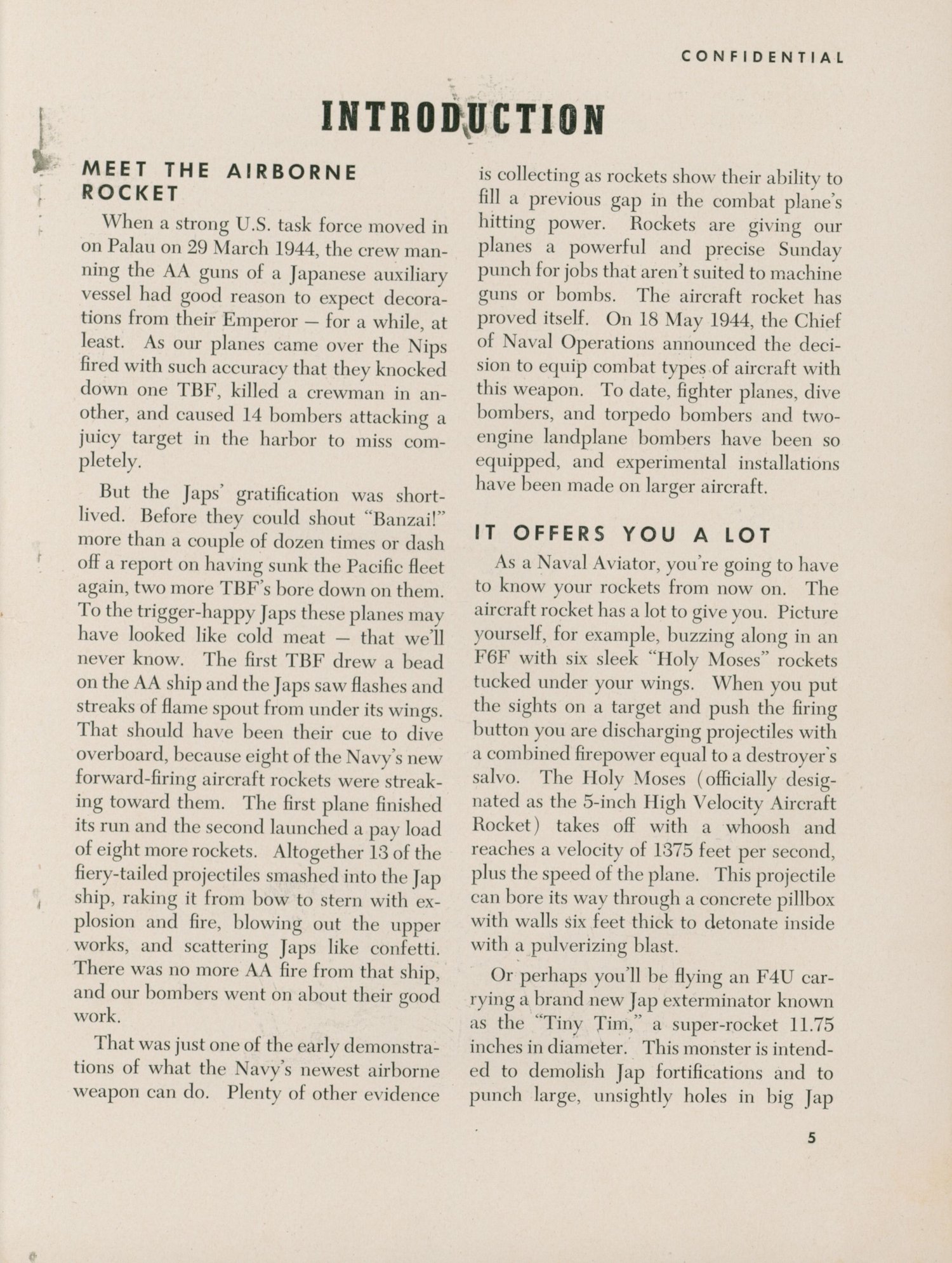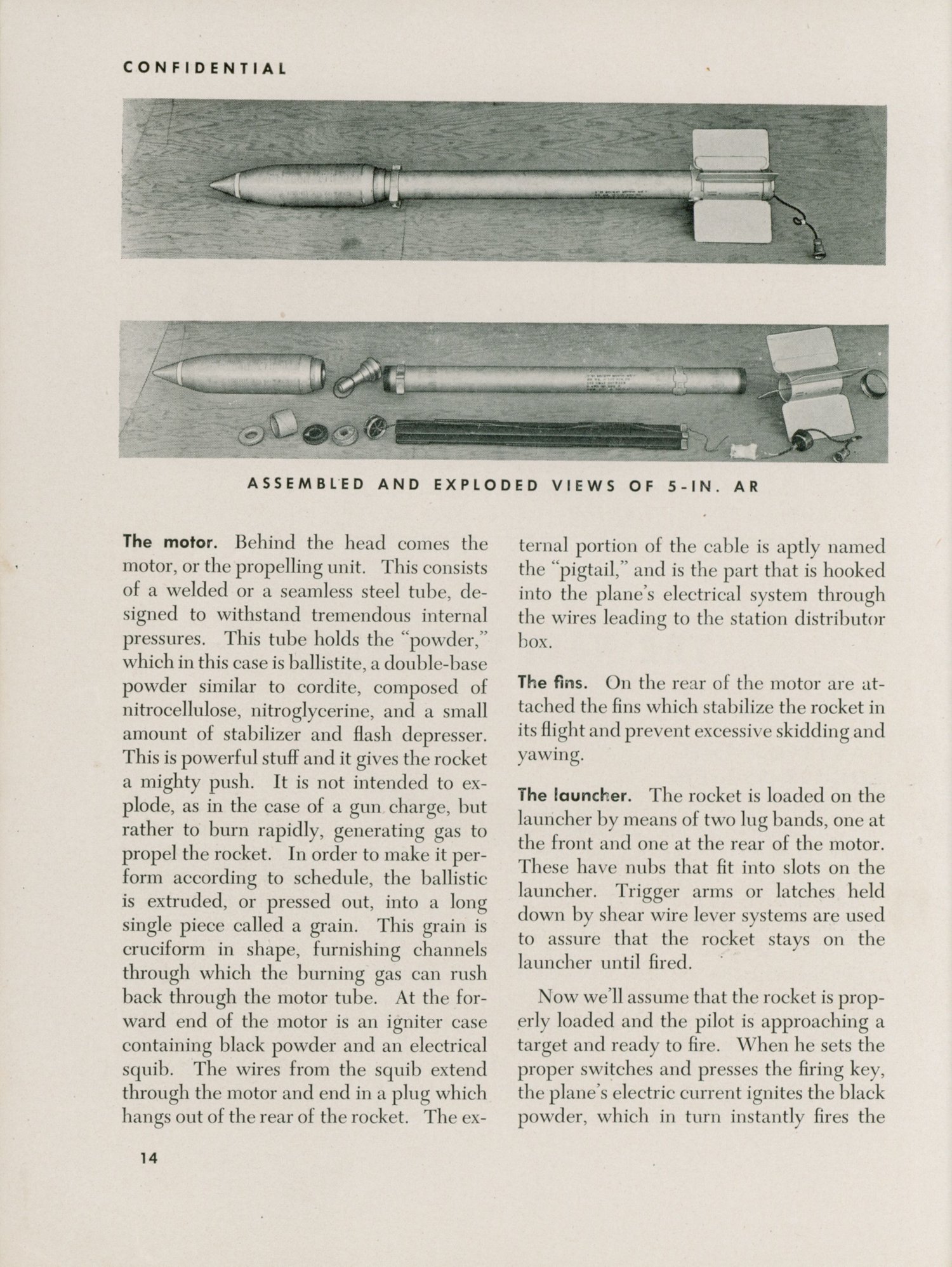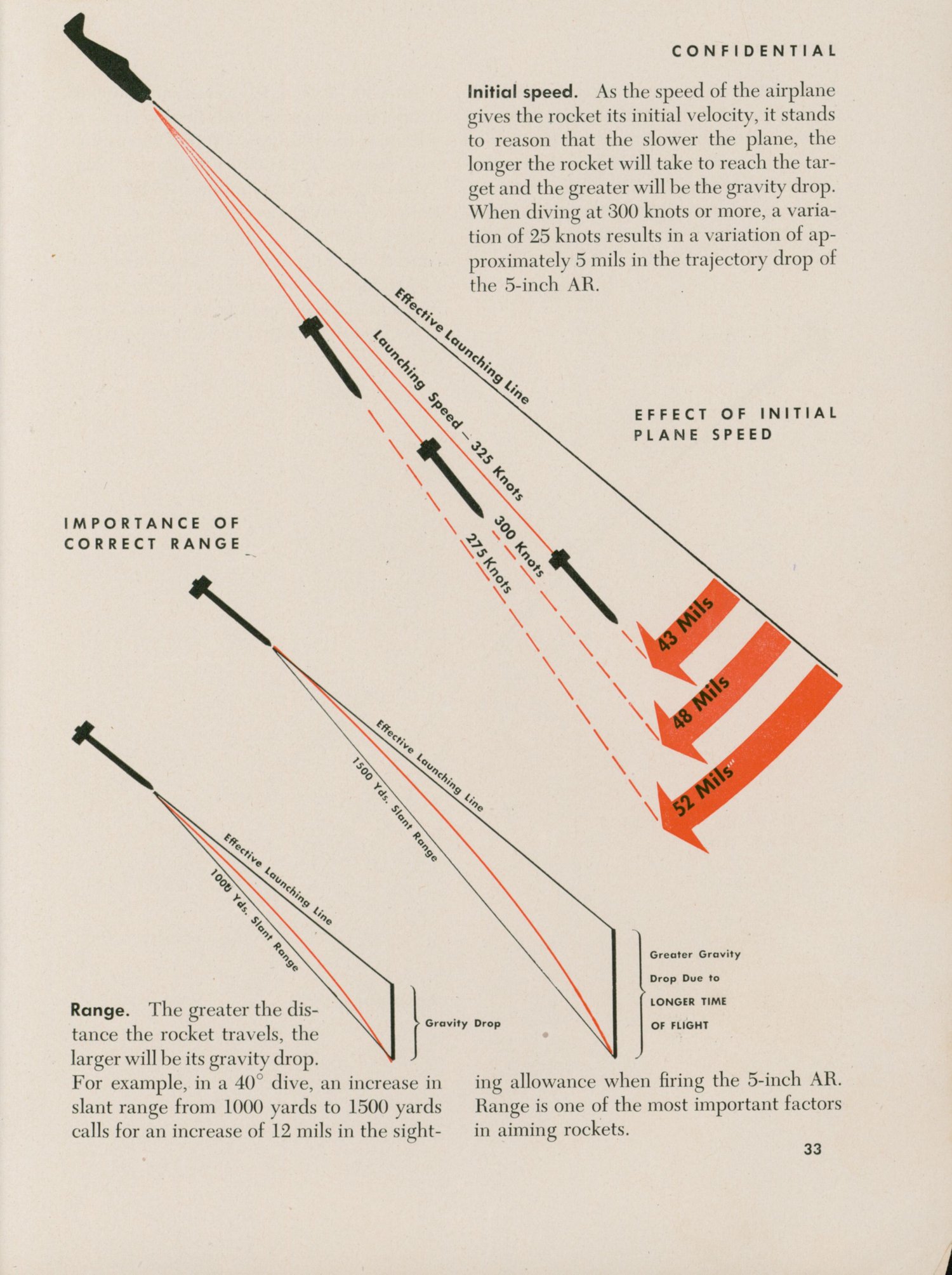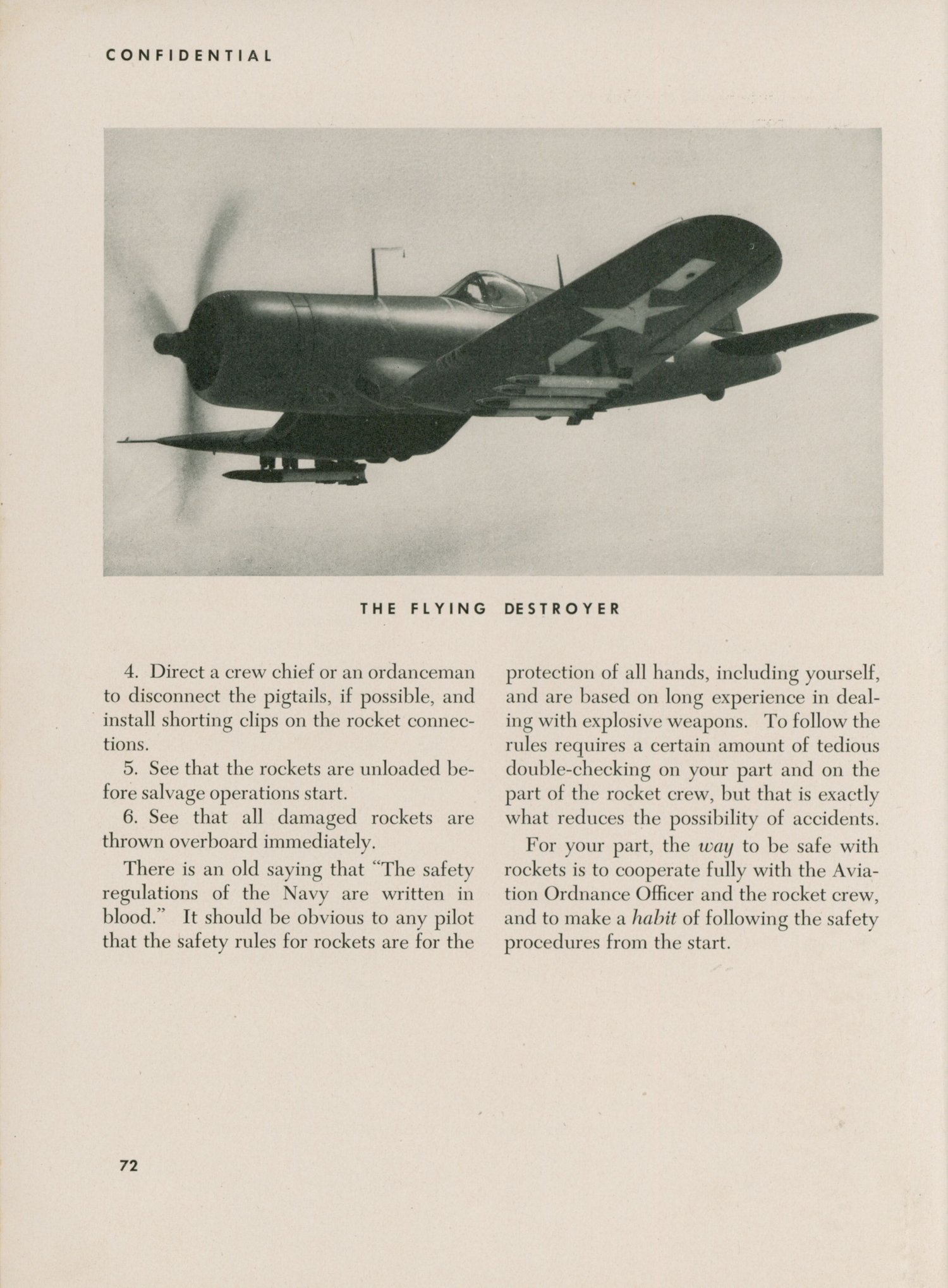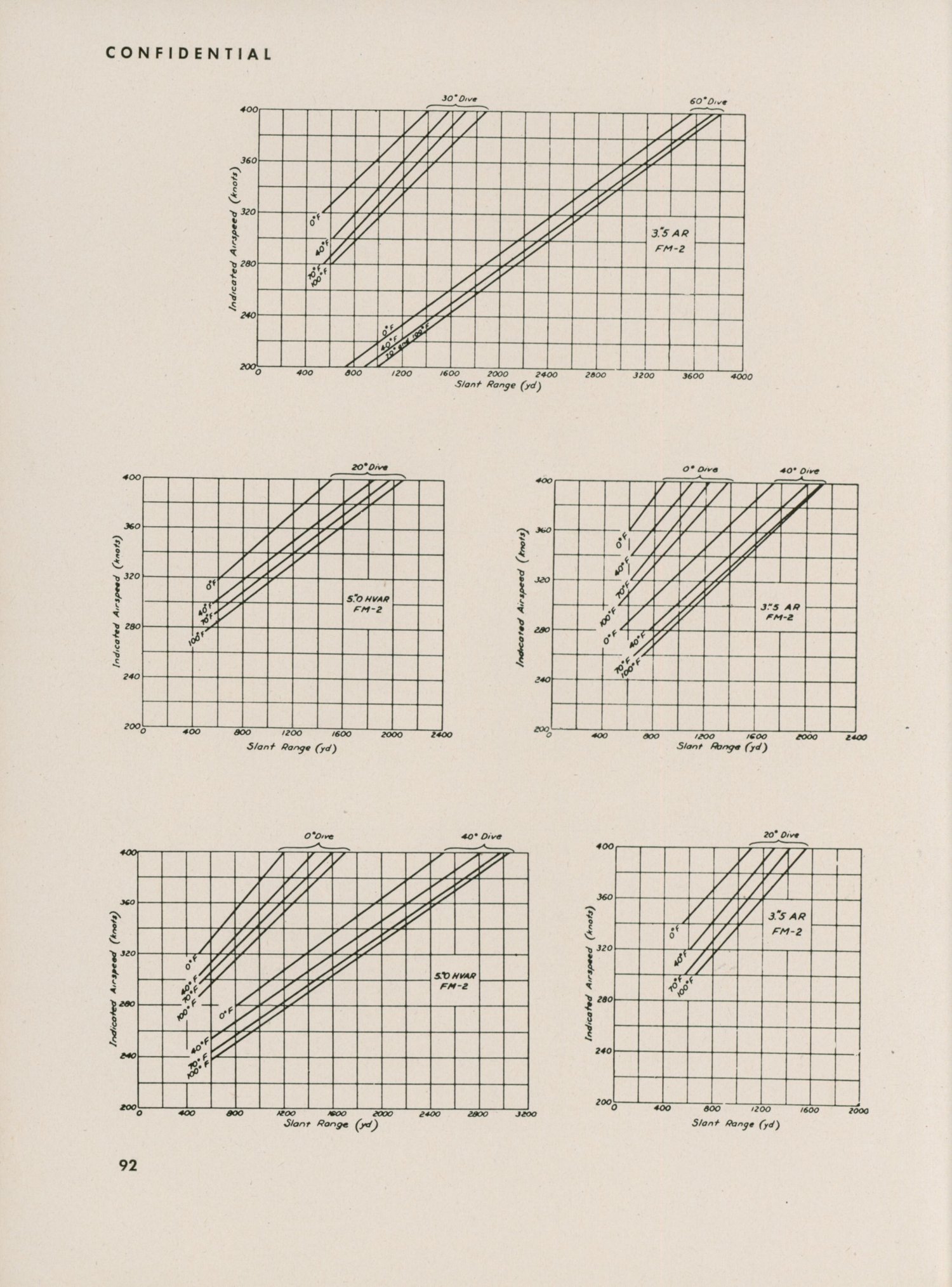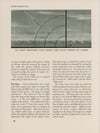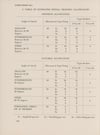Airborne Forward Firing Rockets: Confidential Training Notes for Naval Aviators (CONAVAER 00-80S-47 OPNAV 33-NY-36)
Airborne Forward Firing Rockets
Confidential Training Notes for Naval Aviators
CONAVAER 00-80S-47
OPNAV 33-NY-36
Aviation Training Division, Office of the Chief of Naval Operations, U.S. Navy, May 1945
Airborne Forward-Firing Rockets, Training Notes for Naval Aviators, is a manual intended primarily for use as a guide by Naval Aviation activities concerned with training aircraft pilots in the use of airborne forward-firing rockets. A companion manual, Airborne Forward-Firing Rockets, Training Notes for Aviation Ordnancemen, has been published concurrently. It is recommended that pilots study them together.
Although the airborne forward-firing rocket is a recent development, it has proved to be a highly effective weapon in the hands of pilots who have been trained properly to use it. Experience has demonstrated that the accuracy and combat efficiency of the rocket is directly dependent on the precision methods of training presented herein.
In view of the relative newness of this weapon and the advances which have been and are being made in rocket training, it is probable that some of the information presented in this manual will be out of date in the near future. However, the fundamental principles of aircraft rocket firing will remain unchanged and only the practical training techniques may be altered as the result of further experience. This manual is based on the experience gained in more than a year of training.
In preparing this publication, every effort has been made to reflect accurately the current directives and instructions regarding the handling and use of airborne forward-firing rockets. The interpretation of any instructions contained herein is not to be construed as amending those issued by cognizant bureaus.
This publication has been produced by the Aviation Training Division Office of the Chief of Naval Operations. Acknowledgment of valuable assistance is made to the Commander Fleet Air, West Coast.
Contents
- Introduction
- Meet the Airborne Rocket
- It Offers You a Lot
- Rocket-Plane Partnership
- A Challenge to Your Skill
- How a Rocket Works
- A Bit of History
- The Navy’s Rockets
- Parts of the Rocket System
- Types of Navy Rockets
- Rocket Equipment
- The AR Launchers
- The Station Distributor Box
- The Rocket Selector Switch
- How to Get Hits with Rockets
- Rockets are Distinctive
- Trajectory
- Other Factors Affecting Rocket Flight Path
- Setting the Sight
- Signs of Correction
- Sight-Setting Tables
- Direct Sight Settings
- Settings for Standard Types of Attacks
- Ballistic Aiming
- Zero Sight Settings
- Sources of Error
- Individual Pilot Training
- Objectives
- Pre-Flight Training
- Rocket Flight Training
- Range Layout
- The Key to Accuracy
- The Angle Comes First
- How to Develop a True “Seaman’s Eye”
- Avoiding Slips and Skids
- Controlling Speed
- Approach Procedure
- Types of Firing
- Make Training Realistic
- Minimum Safe Range
- Safety Procedure and Regulations
- Play Safe
- General Safety Rules
- Rocket Safety Procedure Aboard Aircraft Carriers
- Indoctrinating Ship’s Personnel
- Safety Plugs
- Loading Rockets
- Crash Procedure Aboard Carriers
- Appendix A: References
- Publications
- Training Films
- Appendix B: Rocket Training
- Flight Syllabus for VT
- Flight Syllabus for VF
- Flight Syllabus for VSB
- Appendix C: Boresighting Methods
- With Fittings
- Without Fittings
- On Screen
- Gun Camera
- Measuring the Launcher Angle
- Appendix D: Tentative Zero Sight-Setting Charts
- FM-2
- F6F-3, F6F-5
- F4U-1, F4U-1D, FG-1
- SB2C-1, SB2C-1C, SB2C-3, SB2C-4
- Appendix E: Training and Tactics
- CNO Letter Establishing
- Outline for Training and Tactical Manual
- Outline for Rocket Monthly News Letter
- Distribution List for News Letter
- Training Allowances
122 pages
78 photos/illustrations
48 graphs/tables

